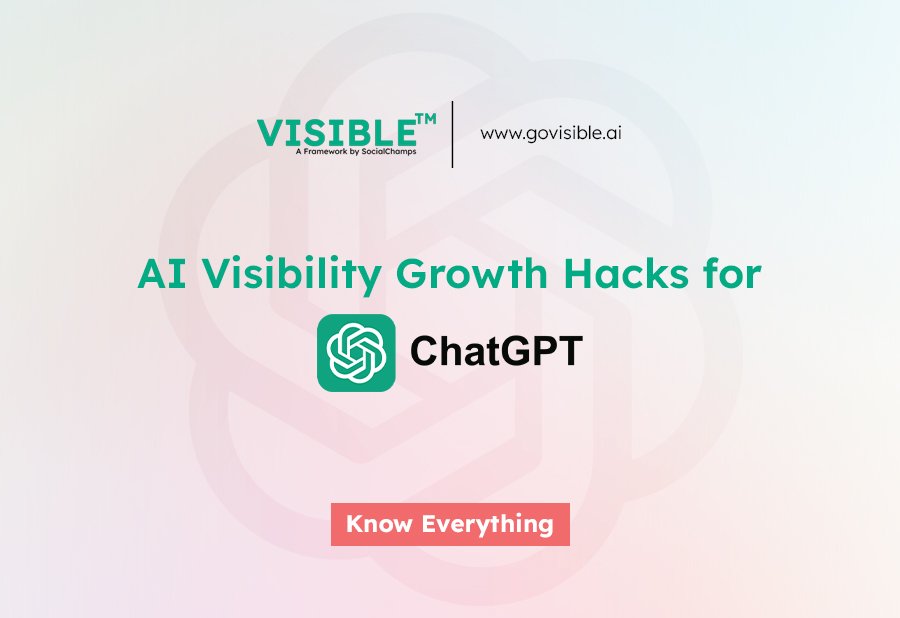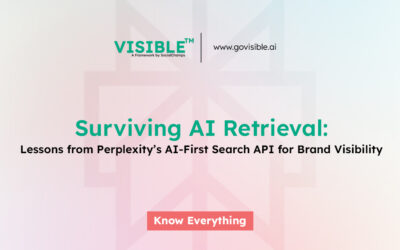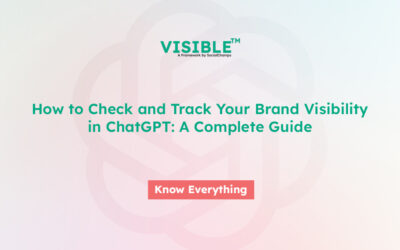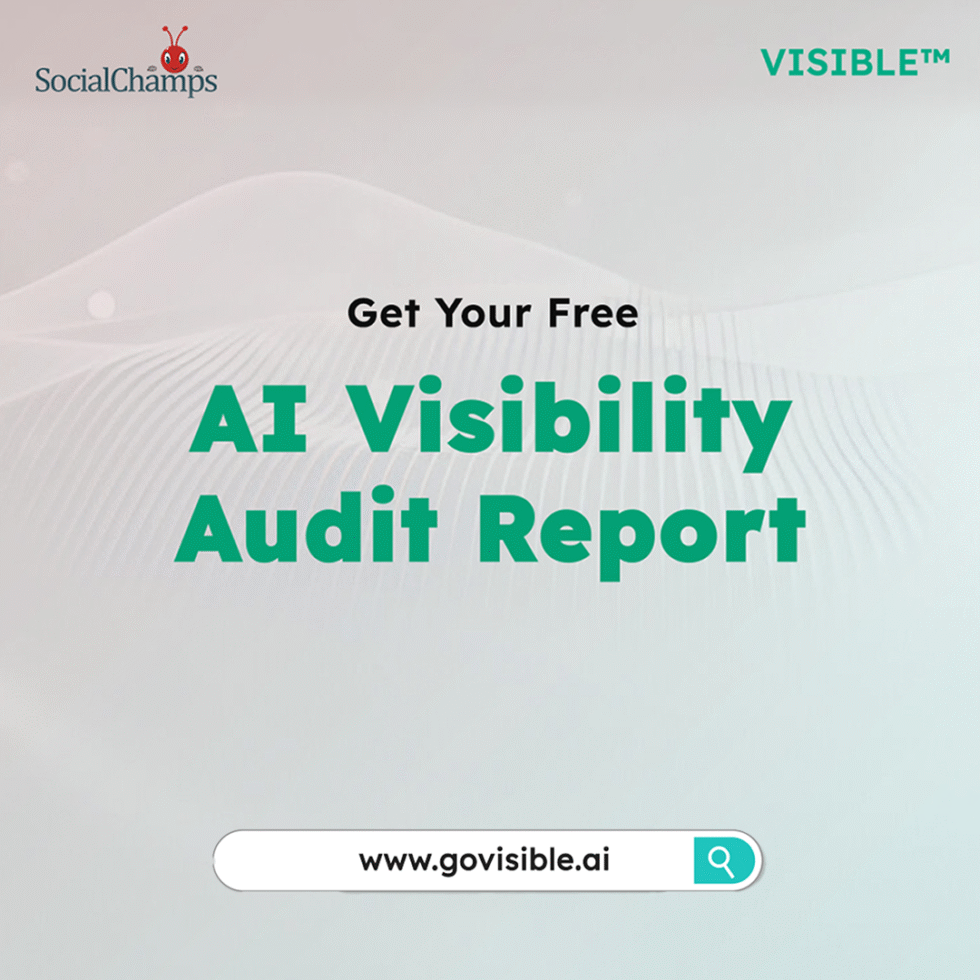In the new era of AI-first search, content visibility is no longer about keywords alone — it’s about how well your content aligns with how language models like ChatGPT think, retrieve, and respond. To dominate visibility on ChatGPT, you need to think like the algorithm: structure your content the way the model wants to present it. Below is a cheat sheet built using the VISIBLE™ framework — revealing how to engineer your content to be chosen, cited, and surfaced in ChatGPT answers.
10 Visibility Tactics ChatGPT Prefers
| Hack | Growth Strategy | Why It Works (Algo-Level Thinking) | Tactical Action Steps |
|---|---|---|---|
| 1. Structure Like a Teacher | Use bullet points, Q&A format, definitions, comparisons. | ChatGPT prefers structured, digestible formats when summarizing or recommending content. | • Use FAQs, Glossaries, Tables • Insert headers for clarity (H1, H2, etc.) • Provide summaries in each section. |
| 2. Embed Conversational Prompts | Include real-world questions or queries inside the content. | ChatGPT is trained on Q&A and forum-style data (Reddit, Quora, StackOverflow). Your content mirrors training data. | • Add prompts like: “What is…?”, “How do I…?”, “Best way to…” • Use Google PAA and Reddit mining. |
| 3. Authority Signal Injection | Cite high-authority sources like Wikipedia, NYT, PubMed, etc. | Citations are a proxy for credibility in GenAI responses. LLMs are often biased toward sourceable, verified content. | • Add “According to…” references • Use schema markup with sameAs, citation, etc. |
| 4. Semantic Entity Anchoring | Mention key entities (people, brands, places) with rich context. | LLMs create embeddings around entities. Rich, clear entity mentions improve retrievability and alignment. | • Use full names + roles (e.g., “Sundar Pichai, CEO of Google”) • Link out to Crunchbase, LinkedIn, etc. |
| 5. Multi-format Answer Readiness | Make content reusable as summaries, bullets, tables, and snippets. | ChatGPT rewrites your content into different formats. If you pre-format it, you increase usage likelihood. | • Add TL;DRs, pros/cons tables, listicles. • Use schema: HowTo, QAPage, FAQPage. |
| 6. Stay Prompt-Discoverable | Write using likely AI prompts, not just keywords. | ChatGPT matches user prompts to the closest semantically relevant content block. | • Add sections like “Prompt: What’s the best CRM for solopreneurs?” • Cluster prompts by persona/intent. |
| 7. Use Temporal Triggers | Mention recent data (2024, 2025), product launches, or news. | LLMs prioritize recency and freshness in responses, even in static models. | • Add “In 2025…” or “As of June 2024…” • Mention launches/events. |
| 8. Build Citation-Worthy Content | Create stats, frameworks, and definitions that others cite. | ChatGPT picks content that has been referred to elsewhere (PDFs, blogs, forums, etc.). | • Coin terms (“VISIBLE Score”) • Share on Reddit, LinkedIn, and Quora. • Publish via Medium, Substack. |
| 9. Amplify via Expert Ecosystem | Be mentioned on Thought Leader platforms (Product Hunt, GitHub, etc.) | ChatGPT relies on popular/public expert sources for reference and citations. | • Get listed on relevant directories • Create GitHub repos (even for content) • Launch on Product Hunt. |
| 10. Own Your Knowledge Graph | Optimize your brand & entity data across platforms. | ChatGPT cross-verifies info from public graphs (Wikidata, Crunchbase, LinkedIn). | • Create/optimize Wikidata, Crunchbase • Use the Organization schema on your website • Ensure consistency across platforms. |
ChatGPT doesn’t surface just any content — it chooses content that’s clean, structured, source-rich, and prompt-relevant. If you want your brand to be the answer, not just another link, you must reverse-engineer the behavior of LLMs and create content that feels like it belongs in their training set. Use this cheat sheet as your growth-hacking playbook to start winning visibility in AI conversations where tomorrow’s buyers are already looking for answers.
Want to dominate more than just ChatGPT rankings?
Explore our next guide on Perplexity.ai Visibility Growth Hacks and learn how to structure content for real-time, source-backed AI results.






0 Comments